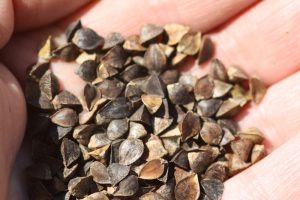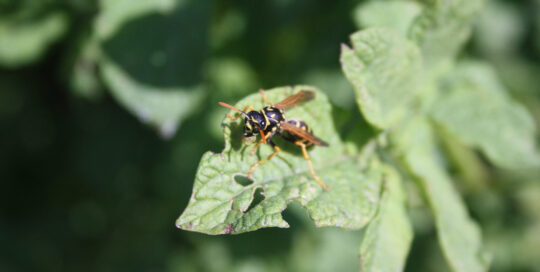Creating Healthy Soil
Views: 5270

Soil health is critical to plants that can stand up to pest pressure.
Time and time again, we see evidence where the weak plants fall when the pests target them. That’s not to say that if you have a healthy garden you’ll never have a nibble taken out of a leaf, but if your plants are well fed, they can stand up when others wither.
Amending Soil
One of the best ways to protect your plants is to beef up the soil. Unfortunately, too many people worry about what they can do to amend their soil when they’re planting in the spring.
In reality, the later summer and fall is the time to think about your soil. The go-to item people consider when they need to improve soil tilth and its nutrient level is compost. I’m a big fan of compost. I can’t get enough of it. And that’s the problem. Unless I brought in a tremendous amount of vegetable and kitchen waste, along with bags and bags of leaves or other brown materials, there is no way I could produce enough for my garden. It would be handy to have a skid-steer, too, since I would need something hefty to turn piles and move compost. Obviously, that’s not going to happen (trust me, it’s been on my list for years), so over the years I’ve turned to additional methods to improve the soil.
Cover Crops
Cover crops are one of my favorite ways to add back to the soil. As summer crops are pulled, it’s easy to spread buckwheat, allowing it to grow until it just flowers before chomping it down and allowing it to work back into the soil. Granted, I will have small patches of it here and there as sometimes I’m removing a couple of plants (like broccoli or cabbage) or small blocks of vegetables. But that’s okay because it’s easy to chop and leave.
Other options for this green manure, as it’s sometimes called, are wheat and barley, as well as mixes that include seeds such as Austrian peas, clover and brassicas. The legumes are very effective in fixing the nitrogen in the soil, which is an added bonus along with the organic matter they provide. In many areas of the country you can plant those through Sept. They need to time to germinate, then will most likely winter kill in most regions. In the spring, you simply need to turn them into the soil a few weeks before planting.
Animal Manure
Fall is also the time to add animal manure. You want at least four months between applying fresh manure to when you’re going to harvest from your garden. Frankly, I prefer an even longer buffer, so when the freeze kills everything, I’ll turn the chickens loose in the garden. They’ll scratch up the dead plants and eat and poop, which is a big help all the way around.
I’ll also dump the straw bedding I clean from the chicken coop onto the gardens in October and November. I’d do the same with any other animal. This helps cover and protect the garden, because bare soil is a cardinal sin of gardening, plus it breaks down to feed the soil. When spring arrives, I’ll turn it under.
Mulch Leaves and Pine Needles
One of my projects this year is to create a bed for blueberries. Blueberries are notoriously difficult to grow around here because our soil is so alkaline. But I interviewed a gentleman a month ago who is successfully growing them in town and he showed me the secret. Now I need to make a bed and fill it with 2 ft. of mulch leaves and pine needles this fall. That will settle through the winter. He also adds a mix of soil amendments including a pelleted sulfur from a place in Canada. If I want blueberries in the future, my job now is to create a soil that will make them happy.
I always giggle when I hear the saying “Happy wife, happy life” because there’s a fair amount of truth in it. There’s even greater truth in “healthy soil, healthy plants.” (Although there’s not a fun rhyme to it.) Take the time in the next few months to improve the soil for a productive and pest resistant garden next season.
Meet Amy Grisak
Amy is a freelance author and photographer in Great Falls, MT who specializes in gardening, foods, and sustainable agriculture. She provides information on every kind…
Amy's Recent Posts

Looking into the Crystal Ball for a Pest Report








